- Home
- Kay Hooper
Once a Thief
Once a Thief Read online
CONTENTS
* * *
Title Page
Author’s Note
Prologue
Chapter One
Chapter Two
Chapter Three
Chapter Four
Chapter Five
Chapter Six
Chapter Seven
Chapter Eight
Chapter Nine
Chapter Ten
Chapter Eleven
Chapter Twelve
Chapter Thirteen
Chapter Fourteen
Chapter Fifteen
Chapter Sixteen
Bantam Books by Kay Hooper
Praise for Kay Hooper’s Novels
Read on for a sneak preview
Copyright Page
AUTHOR’S
NOTE
* * *
About ten years ago, I wrote a series of short contemporary novels for Bantam’s Loveswept romance series. That’s right—romances.
But a funny thing happened while I was writing those books. Although I enjoyed all the characters, one in particular was, quite literally, difficult to keep offstage when he wasn’t supposed to be active in the story. My cat burglar Quinn practically walked off the pages, and even at the time my agent told me that “one day” I’d have to do more with him.
One day came.
Sometimes a writer is lucky enough to be able to look back at older work and be granted the opportunity to rewrite it as she wanted to write it at the time; I was writing series romance then, and there were simply things I couldn’t do in the books because of what they were—and when they were. I am very proud of those books, but they were definitely stories written for a particular audience at a particular time.
At the time, I was unable—both because of the length of the books and the genre itself—to make the characters as complex as I wanted, to give them shades of gray, ambiguities of motive and personality. And since I was already, by then, feeling the need to stretch my wings, to write bigger, more complex books, I was very conscious that I was not providing Quinn and some other characters the wider canvas they deserved.
Which brings me to the second reason I wanted to include this note in the “Thief” books: Once a Thief and Always a Thief are not the books you remember if you read the original versions. They’ve been, in a sense, reimagined. I haven’t just added a few thousand words here and there—I have restructured the stories in several ways.
Some scenes remain from the originals, but even those have been shifted, sometimes slightly, to provide a different perspective or provide that wider canvas for the characters. Some characters have either stepped back out of the spotlight or disappeared entirely from the narrative, and new ones are introduced. The same goes for some plotlines.
This is Quinn’s story, or at least the beginning of it. And since he continued to be a lively presence in my writer’s imagination long after his story was supposedly told, I gather he has more adventures in mind. We’ll see.
If you’ve enjoyed my more recent suspense novels, I hope you’ll give this one a try. It’s not as dark and gritty as the Bishop books, and if there are any psychic elements—well, we’ll just have to wait and find out about that—but Quinn is a lot of fun, and he’s allowed me to show a lighter, more playful side of my writing.
My agent calls this sort of story a “caper, a bright, fun, witty adventure that holds on to its sense of humor even though there might well be deadly danger lurking about.”
Might well be . . . and there is. Because there’s a spectacular collection of gems and artworks about to go on display, and more than one person is ready and willing to do whatever it takes in order to possess it. Even kill.
Come meet Quinn, and let me know what you think of him. I like him a lot. And I hope you do too.
PROLOGUE
* * *
Outside the penthouse windows, darkness hid the fog that had rolled in and now clung wetly to the city; it was a fairly typical San Francisco night. Inside the penthouse, antique furniture glowed in the soft lighting of several lamps turned low. And in the sunken den, the brisk crackling of flames in the big marble fireplace was the only sound to break the tense silence.
Then the man on the couch, who had been staring into the fire with a frown, spoke without looking at his visitor. “What makes you think you can catch him? So far, nobody’s come close. A whisper of a name, that’s all he is.”
The visitor had prowled about the room as he talked but now sat in a chair that was at right angles to the fireplace. Like his host, his voice was low. “A lesson I learned a long time ago: With the right bait, you can catch anything. And anyone. The bait you have to offer is guaranteed to draw him out.”
His host slanted him a look. “I’ll grant that. It’s guaranteed to draw every thief you could name out of the woodwork. They’ll be tripping over each other.”
“It won’t be as bad as that. Tough security will weed out all but the . . . um . . . serious contenders.”
“Tough security?” The man on the couch gave a soft laugh. “We both know that most of the time in most places security’s a pretty illusion, even with state-of-the-art technology. They want in badly enough—they’ll find a way. Sure, the petty thieves will be discouraged if security looks tough, but it still leaves a fairly large field of hopefuls.”
The visitor nodded. “I know, but there really aren’t many out there ambitious enough to go after any part of the Bannister collection, no matter what kind of security we surround it with. For one thing, it’d be damned difficult to sell any of it. Virtually all the individual pieces are so well-known they’d make any fence think twice and then opt out. The risk outweighs the potential profit. I really believe the bait would draw a collector—not just a thief out for a quick score.”
“Some thieves are collectors,” his host pointed out.
“Not many. But he’s one of them. And look at his track record. Every piece we know he’s taken in the last three years was one of a kind and had a colorful past; most had so-called curses attached to them. Just like the Bolling diamond. One whisper that the Bolling is out of a vault on public display is going to make his mouth water.” The visitor shifted restlessly and added, “I don’t want to risk the whole collection. This madman’s greedy enough to take everything if we make it too easy for him.”
“I can’t display the Bolling alone. It’s part of the collection, and I’ve said publicly more than once I’d never exhibit any single piece alone. If I had a sudden change of heart now, any thief worth his salt would smell a trap.”
After a moment, the visitor said, “Dammit, I didn’t know you’d said that. If I had, I never would have—I can’t ask you to risk the entire collection, it’s too dangerous. A single piece we could protect, I could protect, but if the collection is always together in one place, and he gets past security, past me . . . he could get it all.”
“The bait and the fish gone forever.” Returning his gaze to the bright fire, the man on the couch said quietly, “It’s taken my family almost five hundred years to assemble the collection.”
“I know.” There was a long silence, and then the visitor said softly, “It was a lunatic idea. I’ll try something else, Max.”
Maxim Bannister sent the visitor another look, this one a bit wry. “There’s nothing else to try, and you know it. The kind of bait you need is rare; off-hand, I can’t think of another collector who’d be willing to take the risk.”
“I can’t ask you to take it.”
“What choice do you have?”
The worn folder contained a number of eight-by-ten photographs in full color. They were pictures that had been printed again and again in books and magazines all over the world. The Bannister collection rivaled the treasures of the Pharaohs in ter
ms of sheer dazzling mystique and public fascination. It was the last great “family” collection of jewelry and artworks, privately owned and displayed only at the whim of its owner. It hadn’t appeared publicly for more than thirty years.
He opened the folder with hands that weren’t quite steady, and a tight little breath escaped him when the light of the desk lamp fell onto the first photograph. No matter how many times he saw it, the effect on him was always the same. Simply but exquisitely set in a pendant of twenty-four-karat gold, the Bolling diamond was breathtaking. It was a seventy-five-carat teardrop canary, the brilliant yellow hue so vivid it was as if the stone had captured a piece of the sun.
The centerpiece of the Bannister collection, it was flawless and priceless. Like the Hope diamond, the Bolling possessed a colorful and often tragic history; it was supposed to be cursed, but he didn’t believe in curses.
He rubbed a finger across the photo, almost able to feel the coolness of the polished stone. Then, forcing himself, he turned the photo over and began briefly studying the others, one by one. They had less of an effect on him individually than the Bolling had, but the splendor of the entire collection made his heart pound almost painfully.
The Black Royal diamond, forty carats, a darkly perfect oval surrounded by brilliant white diamonds; it had, supposedly, been a ransom payment for a kidnapping the history books never mentioned.
The Midnight sapphire, a two-hundred-carat square stone, flawed but beautiful in its rich, deep color; legend had it that the stone—believed to be nearly a thousand years old—had been found, faceted and dully polished, in the ruins of a temple in India almost three hundred years before.
The Talisman emerald, a hundred and fifty carats of oval green fire, engraved with cryptic symbols no one had yet been able to decipher, and set in a wide bangle bracelet of twenty-four-karat gold. In mystical circles, the story persisted that the emerald had been worn by Merlin and had been used to amplify the wizard’s powers.
There were also numerous lesser pieces of jewelry—lesser in terms of value, but each stunning. Necklaces, rings, and bracelets of gold set with exquisitely cut and polished gems. From the brilliance of diamonds to the opacity of jade, ivory, and opal, virtually every precious and semiprecious stone known to man was represented at its very best.
No wonder they were calling the exhibit Mysteries Past; every major piece in the collection had a mystery attached to it in some way, many of them connected to historical events or people.
In addition, there were figurines, cups, decanters, and religious works of art in gold and gems. Each piece had a story or legend connected to it. Each piece was breathtaking. Together, they would have tempted a saint.
He wasn’t a saint.
With trembling hands, he gathered the photographs together and returned them to the worn folder. The exhibit opened in just about eight weeks, and was scheduled to run for only two months in San Francisco. After that, the collection would be returned to the safety and silence of the vaults that had protected it for decades.
Unless someone got to it first.
CHAPTER
ONE
* * *
Somebody ought to put her in one of the display cases. Talk about an eye-poppin’ show.”
Morgan West stopped in her tracks to lift an eyebrow at a suddenly flustered workman. “Voices carry in museums,” she said gently. “You might want to keep that in mind.”
“Yeah. I mean—yes, ma’am. Sorry, ma’am. No offense meant.”
“None taken. It’s always been my ambition to be a museum display.”
He cleared his throat. “Priceless things. That’s all I meant. Treasures. Works of art.” He eyed her, then sighed. “I’m not gonna win, am I?”
“No, I’m afraid not.”
“I’m a sexist pig.”
“Pretty much.”
“Objectifying women.”
“This woman anyway. Yes, I’d say that was what you were doing.”
“I apologize, Miss West.”
Perfectly aware that the other workmen near enough to overhear this exchange were hiding grins, Morgan knew when it was time to let her prey off the hook on which he’d impaled himself. “Accepted. Have a nice day.”
“Yes, ma’am. You too.”
Morgan strolled away, knowing that laughter would erupt the moment she was out of sight. Which it did.
She sighed.
Her measurements had been causing her problems since her thirteenth birthday, so by now she should have been at least somewhat accustomed to it.
She wasn’t.
There were men who admitted that long, shapely female legs inspired amorous fantasies; there were those who had the same basic response to the rich curves of swaying hips. But men whose primitive instincts were aroused by an ample bust, Morgan had found, undoubtedly outnumbered the rest.
Probably something Freudian about it.
Or something infantile.
At any rate, her centerfold measurements had caused her more trouble than joy. A lot more. Her dates during high school and college had been so entranced by her charms, she often wondered if they knew what her face looked like. Even the Rhodes scholar she’d briefly gone out with—hoping his mind was on a higher plane—had stuttered dreadfully whenever his gaze strayed to her chest.
Which was often.
And that explained one reason why Maxim Bannister had won her intense and total loyalty. He had, to be sure, gulped visibly when she’d first walked into his office, but he had also conducted the hour-long interview without allowing his gaze to stray to her chest—and without making her feel it required all his concentration to avoid staring. And since that time, he had managed not only to make her feel completely comfortable in his presence but had even responded with genuine sympathy when a particularly degrading experience with a date had caused her to unburden herself in an explosion of temper.
She liked Max a lot. He was one of the very few male friends she’d ever had, and she was delighted by the knowledge that, while he was no less appreciative of nature’s bounty than the next man, his awareness and interest were detached rather than hormonal. He also had an unerring eye for color and style, and during the months of preparation for the Mysteries Past exhibit, she had gradually abandoned her dark-colored, loose blouses and multilayered outfits in favor of more elegant and flattering clothing.
When Max told her she looked good in something, she knew it was the truth. He’d said once that she was a queenly woman, the observation made in an assessing rather than complimentary tone, and Morgan had, quite unconsciously, begun walking without the slump she had just as unconsciously adopted in her teens. In a few short months, he had very quietly and gently and unobtrusively eradicated both Morgan’s bitterness and the chip on her shoulder. Thanks to him, she was as proud of her body as she was of her mind.
Well, nearly.
Which wasn’t to say it no longer caused her problems. In fact, masculine appreciation of her measurements was, indirectly, to blame for a predicament that was destined to occupy her for quite some time.
But on this mild Thursday afternoon, Morgan was blessedly unaware of the storm clouds building up on her own personal horizon. As the director of the forthcoming Mysteries Past exhibit, her mind was entirely focused on business.
“You’re frowning,” Wolfe Nickerson noted when they encountered each other in the lobby. He was the security expert Lloyd’s of London had sent to oversee both the preparations for the exhibit and the two-month showing itself.
“I’m not surprised. Do you believe in intuition?” she asked.
“I’ve been known to get a hunch now and then. Why? Are you feeling intuitive?”
“Yeah. At least—I guess that’s what it is. There’s something out of focus, Wolfe. Something not right.”
“With the preparations for the exhibit?”
“I don’t know. Maybe.” She sighed. “God, I hate it when I get one of these feelings. It’s like I saw something out of the
corner of my eye, you know? Something I didn’t look at as closely as I should have.”
Wolfe nodded. “Yeah, I’ve been there. But you know as well as I do that it’s pretty much impossible to guard against a threat when all you’ve got to go on is a feeling. We’re doing everything we can to protect the collection.”
“Maybe not everything. Would pulling up the drawbridge and flooding the moat be out of order?”
“Well, it might make things a bit difficult for visitors.”
Morgan hugged her ever-present clipboard and rested her chin on the top, matching his gravity when she said, “Yeah, but do we really need visitors? They come, they gawk—big deal.”
Smiling, Wolfe said, “You really are bothered, aren’t you?”
“A little bit, yeah.”
“But there’s nothing here yet to steal, remember? I mean, none of the collection. All those nice display cases the workmen are building are going to be empty for weeks yet.”
“I know, I know.”
“But?”
“But . . . something’s wrong.” Morgan shook her head with a faint grimace. “The place just doesn’t feel right. I did a walk-through a little while ago, and I could swear I was being watched.”
Wolfe eyed her, a little amused. “Well, you usually are.”
“No, not that way.” Morgan was intent on making sense of her own feelings and hunches. “Watched. Almost . . . I was going to say stalked, but I don’t mean it in the modern way, with some half-crazed guy who thinks he’s in love with me dogging my every step.”
“How do you mean it, then?”
“More of a . . . predatory thing. As if I was being tracked, shadowed, my strengths and weaknesses sized up.”
Wolfe’s eyebrows rose, but more in surprise than disbelief. “That’s a fairly primitive image. And a very specific threat to feel intuitively.”
“I know. That’s why it’s creeping me out, big time.”
He frowned. “All right, Morgan. I’ll have the extra guards do a sweep of the building at the beginning of each shift, as well as halfway through the shift. Good enough?”

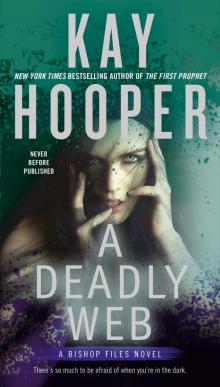 A Deadly Web
A Deadly Web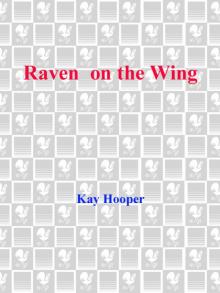 Raven on the Wing
Raven on the Wing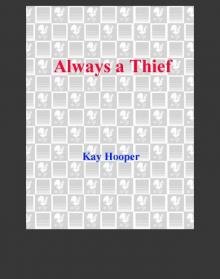 Always a Thief
Always a Thief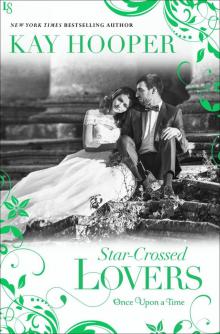 Star-Crossed Lovers
Star-Crossed Lovers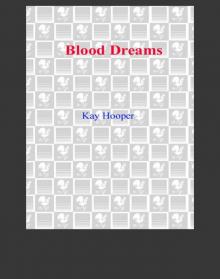 Blood Dreams
Blood Dreams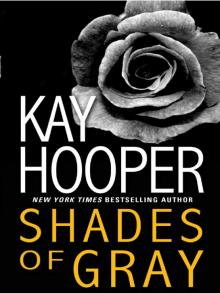 Shades of Gray
Shades of Gray Rebel Waltz
Rebel Waltz Chill of Fear
Chill of Fear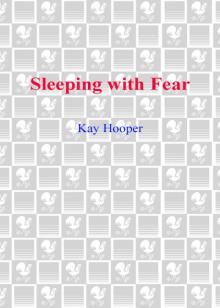 Sleeping With Fear
Sleeping With Fear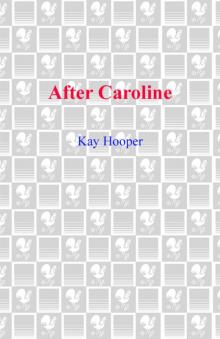 After Caroline
After Caroline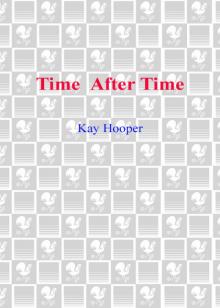 Time After Time
Time After Time Haunting Rachel
Haunting Rachel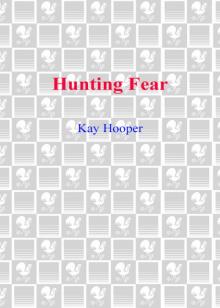 Hunting Fear
Hunting Fear Out of the Shadows
Out of the Shadows Whisper of Evil
Whisper of Evil Blood Sins
Blood Sins Hiding in the Shadows
Hiding in the Shadows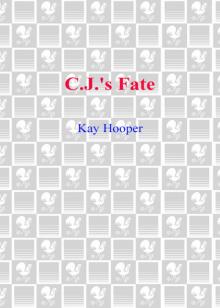 C.J.'s Fate C.J.'s Fate C.J.'s Fate
C.J.'s Fate C.J.'s Fate C.J.'s Fate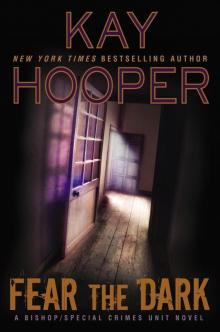 Fear the Dark
Fear the Dark Illegal Possession
Illegal Possession Stealing Shadows
Stealing Shadows If There Be Dragons
If There Be Dragons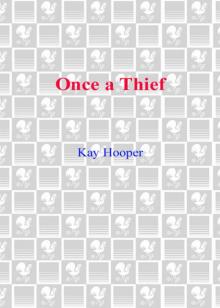 Once a Thief
Once a Thief In Serena's Web
In Serena's Web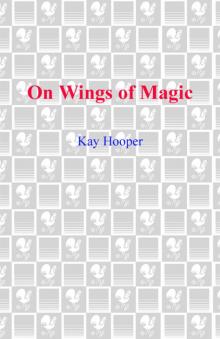 On Wings of Magic on Wings of Magic
On Wings of Magic on Wings of Magic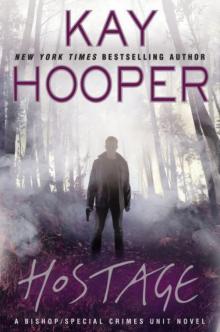 Hostage
Hostage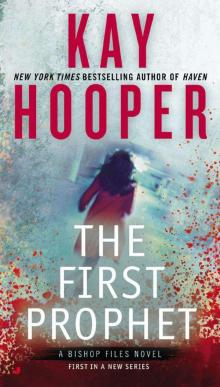 The First Prophet
The First Prophet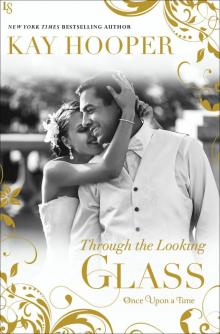 Through the Looking Glass
Through the Looking Glass Golden Flames
Golden Flames Finding Laura
Finding Laura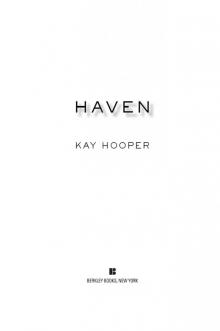 Haven
Haven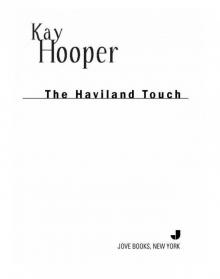 The Haviland Touch
The Haviland Touch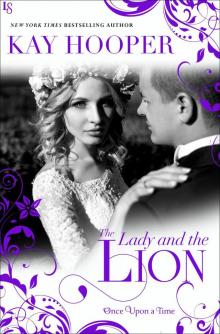 The Lady and the Lion
The Lady and the Lion Haunted
Haunted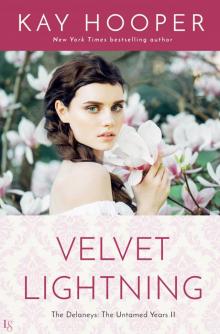 Velvet Ligntning
Velvet Ligntning Blood Ties
Blood Ties Adelaide, the Enchantress
Adelaide, the Enchantress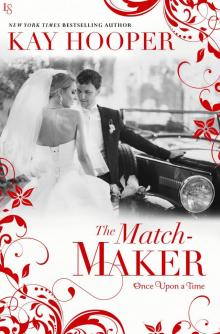 The Matchmaker
The Matchmaker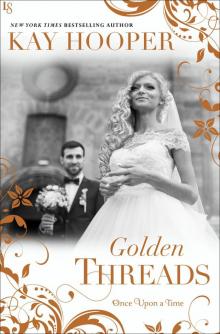 Golden Threads
Golden Threads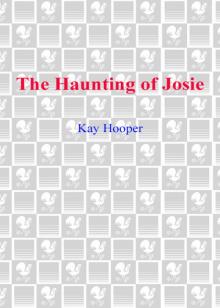 The Haunting of Josie
The Haunting of Josie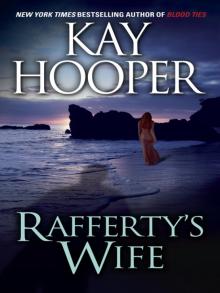 Rafferty's Wife
Rafferty's Wife Amanda
Amanda Hold Back the Dark
Hold Back the Dark Sense of Evil
Sense of Evil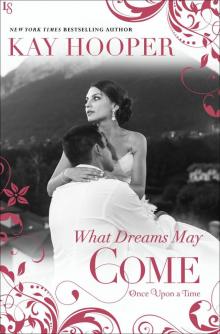 What Dreams May Come
What Dreams May Come Larger Than Life
Larger Than Life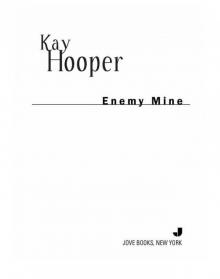 Enemy Mine
Enemy Mine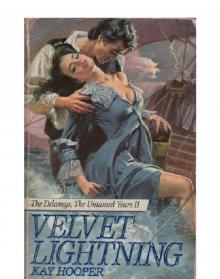 Velvet Lightning
Velvet Lightning The Fall of Lucas Kendrick
The Fall of Lucas Kendrick Aces High
Aces High Captain's Paradise: A Novel
Captain's Paradise: A Novel The Wizard of Seattle
The Wizard of Seattle Lady Thief
Lady Thief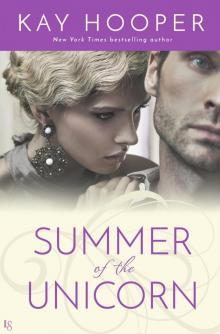 Summer of the Unicorn
Summer of the Unicorn Outlaw Derek
Outlaw Derek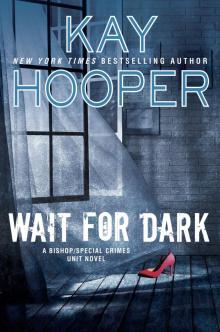 Wait for Dark
Wait for Dark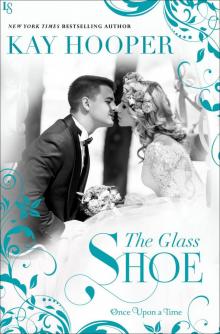 The Glass Shoe
The Glass Shoe It Takes a Thief
It Takes a Thief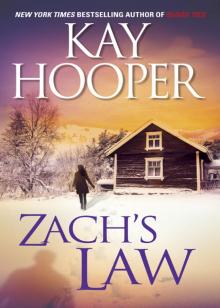 Zach's Law
Zach's Law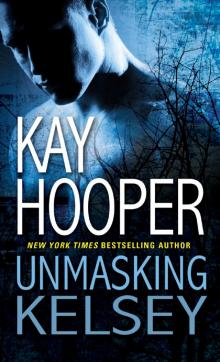 Unmasking Kelsey
Unmasking Kelsey Hidden Salem
Hidden Salem